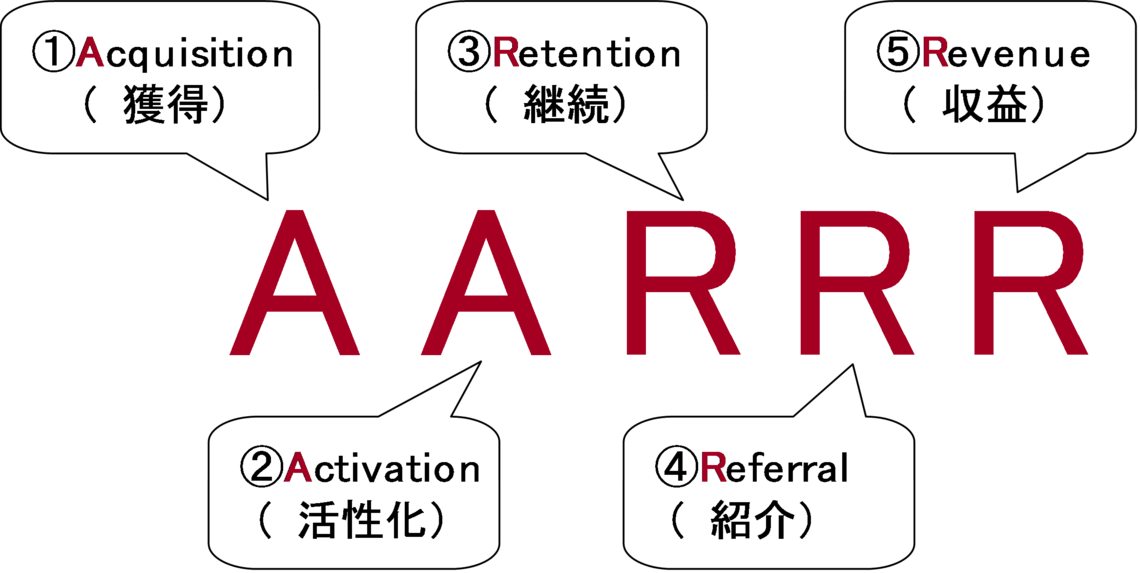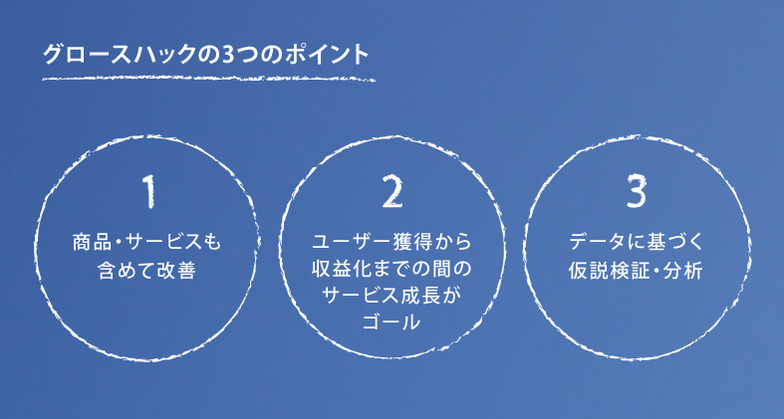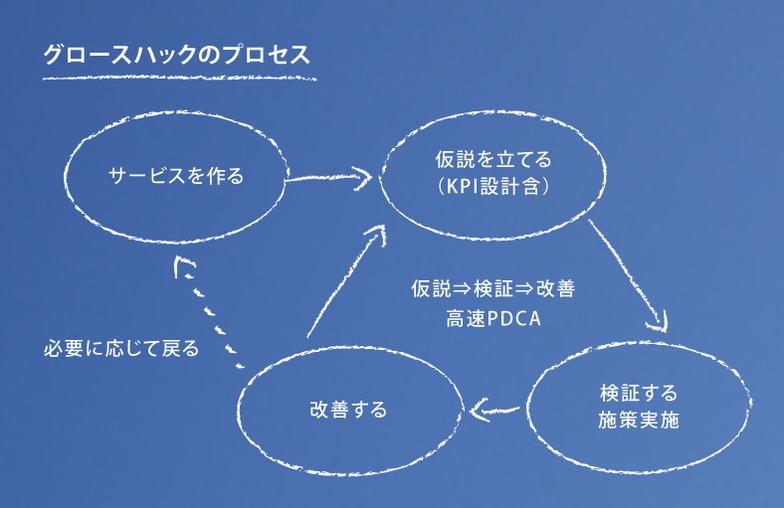What exactly is this trendy "growth hacking"?
Self-introductions and Series Content
Nice to meet you. My name is Katayama. Since I've been given this opportunity to serialize, I'd like to start by introducing myself.
Since my student days, I've continuously developed web services. After joining Dentsu Inc., I've worked extensively as a producer—handling everything from business planning and new development of web services and smart device application services (hereafter: apps) to the operation and expansion of existing services—striving daily with my team and partner companies.
In this series, I plan to cover trends and case studies in business development, primarily in the web services and app fields. I'll base these discussions on the challenges I face in my actual work and my everyday thoughts, incorporating the concept of "growth hacking."
What is Growth Hacking?
First, I'd like to introduce the concept of "growth hacking." Have you ever noticed how the layout of an e-commerce site frequently changes or shifts with each visit? Or perhaps you've invited friends to join social games or tools like Dropbox to receive paid items or bonuses? Maybe you've been tempted by prizes to give an app a 5-star review?
While the examples above are merely surface-level, growth hacking refers to the practice of primarily employing clever development techniques to monitor improvements in a product or service while simultaneously growing that product or service.
Recently, this term has become increasingly prevalent, particularly within the IT services industry (especially consumer-facing services). Growth hackers (i.e., those who practice growth hacking) are now being actively recruited by venture companies, signaling growing recognition of this role as a legitimate profession. That said, many readers may still be unfamiliar with the concept.
(We previously introduced it in a book review column by Dentsu Inc. Modern Communication Lab. http://dentsu-ho.com/articles/639 )
Growth hacking is a relatively new concept. Unlike terms like "marketing," which have official definitions established by public, neutral bodies like national marketing associations, there is currently no official definition set by any public institution.
Therefore, I'll introduce two external explanations below for reference. I've summarized the concept in the following chapters by unraveling the common elements found in these explanations, incorporating my own understanding.
Explanation 1: From a blog post by VASILY, the company behind the fashion app iQON.
"Analyzing metrics and user feedback to embed mechanisms within the product that grow both the quantity and quality of users." (Source: http://growthhack.vasily.jp/2014/05/ultimate-guide-for-growthhack/#定義 )
Explanation 2: From the summary of the lecture "What is Growth Hacking? Learning Service Improvement Methods that Drive Results from Kaizen Platform" delivered by KaizenPlatform on the online learning platform Schoo.
"Growth hacking is about increasing the conversion efficiency of the '→' part in 'Time × Money → Growth'" (Source: https://schoo.jp/design/article/79 )
Three Key Points of Growth Hacking
Explanation 2 in the previous chapter is broader than Explanation 1. However, these two explanations share common ground, which I believe is the essential core for understanding growth hacking.
First, the perspective encompasses not just marketing but also "product and service development." For example, in advertising, the focus is on how to efficiently promote a finished product to target consumers. Growth hacking, however, also considers adapting the service or product itself to fit the consumers (i.e., hacking it).
Growth hacking has an orientation toward designing services that align with market and user needs. This means that if needs change between the initial launch and the current state, it involves prioritizing not just marketing or PR strategies, but also product improvements and redesigns. This is done with an awareness of optimal efficiency, based on the degree of growth and available resources.
Secondly, the core focus of growth hacking is the "growth" aspect itself—meaning the goal is the growth of the business (the product or service). A well-known framework for monitoring this growth is the AAARR model (pronounced "A-A-R-R"), primarily used for analyzing web services and apps.

The AARRR Model is a framework proposed by Dave McClure of the U.S. venture capital firm 500 Startups. It analyzes service growth by dividing it into five stages: ① Acquisition, ② Activation, ③ Retention, ④ Referral, and ⑤ Revenue. Growth metrics for ① and ④ contribute to user volume, while those for ② and ④ contribute to user quality. Ultimately, the goal is to increase sales and profitability as ⑤, the business outcome. Within this framework, key areas are defined as Key Goal Indicators (KGIs), which are the ultimate goals for initiatives. Key Performance Indicators (KPIs), which are intermediate evaluation metrics for initiatives, are then set to monitor progress and eliminate growth bottlenecks.
Finally, and related to this, significant emphasis is placed on hypothesis testing and analysis through data. User feedback and log data are particularly valued as key data points. My series " Roundtable Discussions with Growth Hackers in the Field " on the Growth Hack Japan media platform also clearly shows how much these growth hackers prioritize users. While analyzing data, we also quantitatively monitor the cost-effectiveness of each initiative to minimize financial burden as much as possible.
Summarizing the points so far, we can consider the following:

As described above, I believe growth hacking refers to the methodology and mindset of growing a service by placing emphasis on product/service design and development-oriented approaches, while analyzing and monitoring data.
What exactly does growth hacking involve?
So, when you decide, "Let's do growth hacking!" to grow a web service or app, figuring out exactly what to do can be very challenging. Even without consciously using the term, growth hacking is a comprehensive effort aimed at service growth itself. When done seriously, it involves a deep, repetitive, and often messy process, and the difficulty of designing the overall strategy is also high.
For instance, the challenges hindering service growth vary greatly depending on the service itself, and the ability to formulate hypotheses about potential improvements is crucial. Naturally, since web services and apps often require system modifications, programming knowledge is also beneficial. Furthermore, in some cases, restructuring the team organization itself can lead to better results, meaning it might even be necessary to overhaul the organizational setup. Below, I'll attempt to organize the growth hacking to-do list more systematically. First, I believe the overall growth hacking process itself is quite simple, as follows:

First, create the core service or feature that people will want to use. (This assumes you already have a service users want.) Then, while operating it, identify challenges and understand the current state. Next, formulate hypotheses and KPIs to solve these challenges. Design the improved features or services and test them. Finally, we implement changes that demonstrate measurable improvement and iterate. Growth hacking also aims to intervene within products/services to drive growth, so depending on needs, we may not only improve but also revisit and rebuild the entire product/service (dashed line in the diagram). While growth hacking essentially means rapidly cycling through the service improvement PDCA loop, re-examining the service's core value is also a crucial growth hacking tactic.
We believe specific improvement methods have a hierarchical structure, similar to product design. Since this series focuses on growth hacking for web services and apps, organizing it accordingly yields the following:

First, since measurable growth and improvement are prerequisites, there exists a foundational layer of analytics tracking that underpins everything. User information and logs are collected as needed. Monitoring via analytics tools forms the core infrastructure. Sometimes, changing the analytics tool itself may be considered. We will introduce specific tools as needed in future installments.
Next is the feature improvement layer. For example, changing a page's UI (user interface—the overall term for the look and feel of the interface, including button size, layout, and other display and input elements) is a clear improvement. This refers to implementing standalone functional improvements by rewriting source code. Examples include A/B testing, LPO (optimizing the landing page that first attracts users), server upgrades, running in-service campaigns or sales, implementing or enhancing push notifications for apps, optimizing form designs like contact pages, implementing invitation codes for new users, improving the initial tutorial, and setting up support Q&A.
As mentioned earlier, growth hacking refers to a comprehensive methodology and mindset. So while saying "We did an A/B test, so that's growth hacking!" might be partially correct, it's important to understand that A/B testing and other tactics exist within this broader framework.
The next layer up is what we call the design change layer. This involves altering aspects that impact multiple features or the entire service, such as changing the user journey design leading to the payment page, optimizing server configurations, rewriting code and changing templates for all pages via SEO, or completely revamping the overall design. However, the boundaries between this layer and the feature improvement layer can be blurred. For instance, implementing a new invitation code system for a social game might require database restructuring. In some cases, scaling up servers could enhance user experience value. These layers are closely intertwined.
Finally, there's the strategic layer. This involves redefining needs or, in conversation terms, questioning things like "Do users even want this service in the first place?", "What is the core user experience value of this service?", "How does it position itself against competitors?", and focusing on the team itself, such as "Is the current number of engineers optimal for this team?" Rethinking the very existence and overall operation of the service or product is often overlooked but is a crucial growth hacking approach.
Ultimately, growth hacking itself is about "doing whatever it takes (primarily on the development side) to grow the service or product." I believe the diagram I created above doesn't yet capture all possible methods. That's how comprehensive the growth hacking approach is.
Connecting to the Focus on Growth Hackers
Presenting it this comprehensively, it becomes clear that "growth hackers" represent a new breed of professionals possessing both the skill sets of engineers and marketers.
On the other hand, consider SEO, one of the growth hacking methods mentioned earlier—it's a concept that existed over a decade before the internet emerged. Similarly, LPO is a technique already well-established in the world of direct marketing. When it comes to improving services by analyzing metrics, Toyota's "Kaizen" is another example; this approach has been considered and practiced in the manufacturing world for a very long time.
In other words, the methods themselves are things that producers and engineers of web services and apps have been doing and thinking about all along. In that sense, it could be said that no particularly new skills are required at the level of individual tactics.
However, I believe the term emerged because, as web services and apps become saturated, the importance of comprehensively planning such measures to grow services and differentiate one's own offerings has increased.
Just as the rise of "big data utilization" necessitated "data scientists," I believe "growth hackers" will gain even more attention as "growth hacking" becomes more widespread.
In future discussions, we'll continue focusing on growth hacking while expanding the conversation to the higher-level layer of business development.
Was this article helpful?
Newsletter registration is here
We select and publish important news every day
For inquiries about this article
Author

Tomohiro Katayama
Dentsu Inc.
Since graduate school, I have operated web services and sold the company. After joining the company, I have consistently been assigned to departments responsible for new business and product development. In new ventures, I have designed, launched, and grown numerous apps and web services for our company, clients, and media companies. In product development, I primarily focused on transforming cutting-edge digital technologies and methodologies—such as facial recognition, BI tools, MA, digital healthcare, blockchain, growth hacking, and open innovation—into solutions for advertising-adjacent fields where their application was anticipated.

